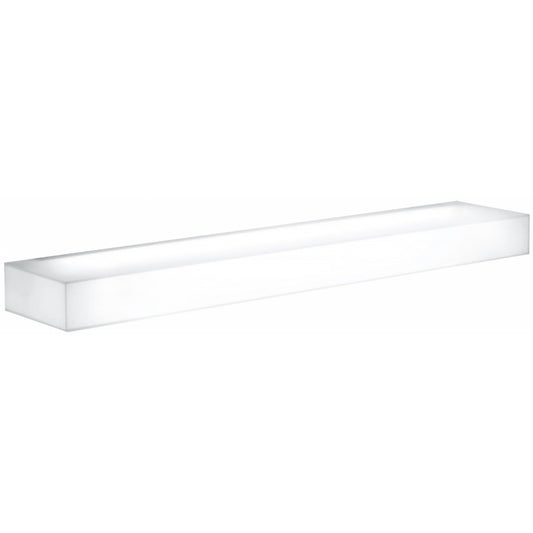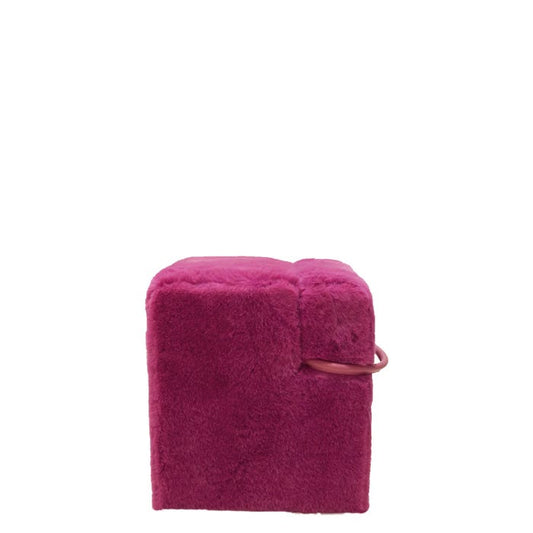컬렉션: Nanda Vigo
Nanda Vigo was born in Milan in 1936. She lives in Milan and East Africa. She was interested in art from a very young age when she spent time in the company of Filippo de Pisis, a family friend, and when she saw the architecture of Giuseppe Terragni from whom - we might guess - she learnt to pay attention to light. After having graduated from the Institut Polytechnique, Lausanne, and having studied further in San Francisco, in 1959 she set up her own studio in Milan. From then on the basic theme of her art was the conflict/harmony between light and space, something the artist uses in her art work as well as in her architecture and design. From 1959 on she frequented the studio of Lucio Fontana, and then she became close to the artists who had founded the Azimut gallery in Milan, Piero Manzoni and Enrico Castellani. In that period, due to her journeys for her numerous exhibitions throughout Europe (more than 400 solo and group shows), Vigo came to know the artists and places of the ZERO movement in Germany, the Netherlands, and France.
In 1959 she began to plan the ZERO house in Milan, which was finished only in 1962. From 1964 to 1966 she took part in at least thirteen ZERO exhibitions, including NUL 65 at the Stedelijk, Amsterdam, and ZERO: An Exhibition of European Experimental Art at the Gallery of Modern Art, Washington D.C.In 1965 the artist curated the legendary ZERO avant-garde show in Lucio Fontana's studio in Milan, in which 28 artists took part. Between 1965 and 1968 she collaborated with Giò Ponti to create the Casa sotto la foglia house in Malò, Vicenza. In 1971 Vigo was given the New York Award for Industrial Design for her lamp designs (Lampada Golden Gate) and, in the same year, she designed and built one of her most spectacular projects: the Casa-Museo Remo Brindisi, Lido di Spina (Ferrara).
-
SCORNICE - Wall-mounted mirror (Request Info)
공급업체:Glas Italia주문제작 유럽도매가 해상운송 6개월~지금 이 가격은 배송비와 세금이 빠진 금액입니다. 최종 가격은 결제 화면에서 주소지를 입력한 뒤에 확인 가능합니다.가격문의 -
ROKOK? - Wall-mounted framed mirror (Request Info)
공급업체:Glas Italia주문제작 유럽도매가 해상운송 6개월~지금 이 가격은 배송비와 세금이 빠진 금액입니다. 최종 가격은 결제 화면에서 주소지를 입력한 뒤에 확인 가능합니다.가격문의 -
COSMOS - Wall-mounted mirror (Request Info)
공급업체:Glas Italia주문제작 유럽도매가 해상운송 6개월~지금 이 가격은 배송비와 세금이 빠진 금액입니다. 최종 가격은 결제 화면에서 주소지를 입력한 뒤에 확인 가능합니다.가격문의 -
LIGHT-LIGHT - Crystal wall shelf with integrated lighting
공급업체:Glas Italia주문제작 유럽도매가 해상운송 6개월~지금 이 가격은 배송비와 세금이 빠진 금액입니다. 최종 가격은 결제 화면에서 주소지를 입력한 뒤에 확인 가능합니다.정가 ₩1,320,000 KRW에서정가₩2,514,000 KRW할인가 ₩1,320,000 KRW에서할인 -
ANDROMEDA - Round wall-mounted mirror (Request Info)
공급업체:Glas Italia주문제작 유럽도매가 해상운송 6개월~지금 이 가격은 배송비와 세금이 빠진 금액입니다. 최종 가격은 결제 화면에서 주소지를 입력한 뒤에 확인 가능합니다.가격문의 -
ANDROMEDA - Square wall-mounted mirror (Request Info)
공급업체:Glas Italia주문제작 유럽도매가 해상운송 6개월~지금 이 가격은 배송비와 세금이 빠진 금액입니다. 최종 가격은 결제 화면에서 주소지를 입력한 뒤에 확인 가능합니다.가격문의 -
ANDROMEDA - Rectangular wall-mounted mirror (Request Info)
공급업체:Glas Italia주문제작 유럽도매가 해상운송 6개월~지금 이 가격은 배송비와 세금이 빠진 금액입니다. 최종 가격은 결제 화면에서 주소지를 입력한 뒤에 확인 가능합니다.가격문의 -
BLOCCO Pouf (Request Info)
공급업체:Driade주문제작 유럽도매가 해상운송 6개월~지금 이 가격은 배송비와 세금이 빠진 금액입니다. 최종 가격은 결제 화면에서 주소지를 입력한 뒤에 확인 가능합니다.가격문의










